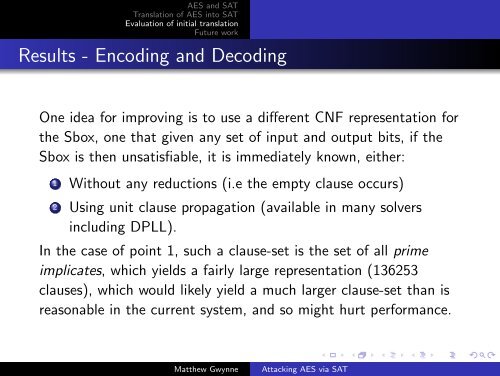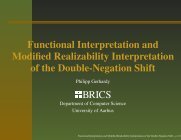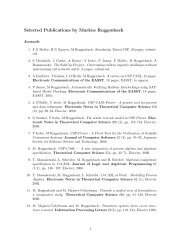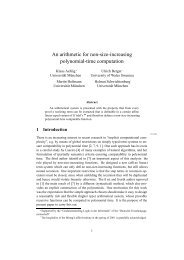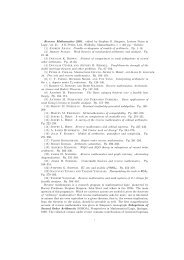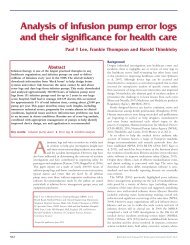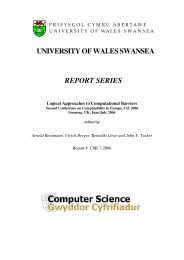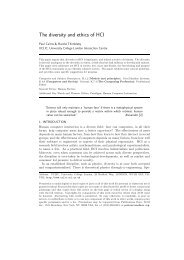Attacking AES via SAT - Department of Computer Science
Attacking AES via SAT - Department of Computer Science
Attacking AES via SAT - Department of Computer Science
You also want an ePaper? Increase the reach of your titles
YUMPU automatically turns print PDFs into web optimized ePapers that Google loves.
<strong>AES</strong> and <strong>SAT</strong><br />
Translation <strong>of</strong> <strong>AES</strong> into <strong>SAT</strong><br />
Evaluation <strong>of</strong> initial translation<br />
Future work<br />
Results - Encoding and Decoding<br />
One idea for improving is to use a different CNF representation for<br />
the Sbox, one that given any set <strong>of</strong> input and output bits, if the<br />
Sbox is then unsatisfiable, it is immediately known, either:<br />
1 Without any reductions (i.e the empty clause occurs)<br />
2 Using unit clause propagation (available in many solvers<br />
including DPLL).<br />
In the case <strong>of</strong> point 1, such a clause-set is the set <strong>of</strong> all prime<br />
implicates, which yields a fairly large representation (136253<br />
clauses), which would likely yield a much larger clause-set than is<br />
reasonable in the current system, and so might hurt performance.<br />
Matthew Gwynne<br />
<strong>Attacking</strong> <strong>AES</strong> <strong>via</strong> <strong>SAT</strong>


